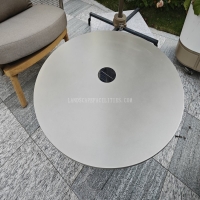Welcome to the website for landscape facilities products and knowledge.
How do landscape tables address the need for lightweight materials in rooftop installations?
Rooftop installations are increasingly popular in urban environments, but they require materials that are both durable and lightweight to avoid structural strain. Landscape tables have emerged as an innovative solution, addressing these needs through advanced material engineering and sustainable design.
Traditional rooftop furniture often relies on heavy materials like concrete or solid wood, which can compromise building integrity. In contrast, modern landscape tables utilize lightweight composites, aluminum, or recycled polymers, reducing load while maintaining strength. These materials also resist weathering, ensuring longevity in exposed rooftop conditions.
Beyond weight savings, landscape tables contribute to urban sustainability. Their modular designs often incorporate green elements like integrated planters, aligning with rooftop garden trends. Manufacturers are now using aerated concrete or fiber-reinforced plastics to further minimize weight without sacrificing stability.
The shift toward lightweight landscape tables reflects broader architectural priorities: maximizing usable space without overburdening structures. As cities embrace green rooftops, these tables offer a practical, eco-friendly furnishing solution that meets both engineering and aesthetic demands.
By combining innovative materials with functional design, landscape tables are redefining what’s possible for rooftop installations—proving that sustainability and urban adaptability can go hand in hand.
Related search:

Recommendation
Outdoor stainless steel table with solar-powered ambient lighting feature - excellent design.